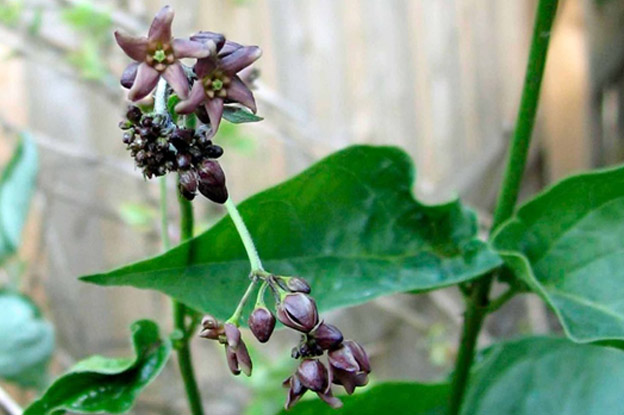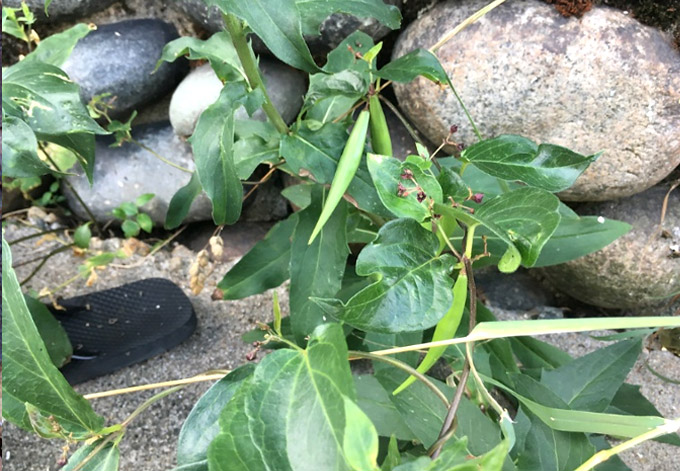Black Swallowwort

Photo: Janet Allen
Black swallowwort (Vincetoxicum nigrum; syn. Cynanchum louiseae) is an invasive herbaceous perennial in the milkweed family. A climbing vine, it can reach six feet in length. It was introduced to the US around 1864 as an escapee from botanical gardens in the Cambridge, MA area. Pale swallow-wort (Cynanchum rossicum, also known as Vincetoxicum rossicum) has pale blossoms but shares the same growth characteristics.
Swallow-wort has opposite leaves on twining green stems and has small dark purple star-shaped flowers. Seeds with their slender filaments are encased in slender pods, like those of native milkweeds, and are dispersed by wind in the fall. The plants have short underground rhizomes, but mostly propagate by seed. Seeds disperse from pointed pods in late summer.
The vines can create dense stands of intertwined stems that impedes movement, hence its nickname as dog-strangle vine. The empty desiccated pods persist throughout the dormant season.
Female monarch butterflies may lay eggs on swallow-wort, which belongs to the milkweed family. But monarch caterpillars cannot digest the leaves, leading to reproductive failure. Dense swallow-wort stands also displace common milkweed, both reducing preferred habitat and providing insufficient food sources for monarch caterpillars.

Photo: Janet Allen


Swallowwort
Olive
Mustard
Stiltgrass
